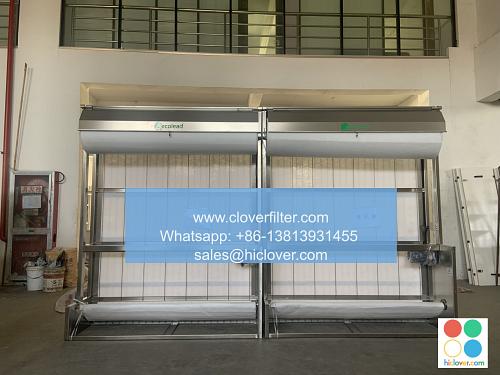The Role of Air Filters in Reducing Indoor Airborne Infections

Air filters play a crucial role in maintaining good indoor air quality (IAQ) and reducing the spread of indoor airborne infections. With the rise of airborne diseases and respiratory infections, such as COVID-19, influenza, and tuberculosis, the importance of air filtration systems cannot be overstated. In this article, we will discuss the role of air filters in reducing indoor airborne infections and highlight various application areas where they are essential.
How Air Filters Work
Air filters work by capturing airborne pathogens, such as bacteria, viruses, and mold spores, and preventing them from circulating in the air. They use various filtration technologies, including HEPA filters, activated carbon filters, and UV light filters, to remove airborne contaminants and improve IAQ. By reducing the concentration of airborne pathogens in the air, air filters can help prevent the spread of infectious diseases and create a healthier indoor environment.
Application Areas for Air Filters
Air filters have various application areas where they are essential for reducing indoor airborne infections. Some of these areas include:
* Hospitals and Healthcare Facilities: Air filters are critical in hospitals and healthcare facilities to prevent the spread of hospital-acquired infections (HAIs) and protect immunocompromised patients from airborne pathogens.
* Schools and Universities: Air filters can help reduce the spread of airborne illnesses in schools and universities, such as influenza and common colds, and improve the overall health and well-being of students and staff.
* Offices and Commercial Buildings: Air filters can help improve IAQ in offices and commercial buildings, reducing the spread of airborne illnesses and improving productivity and employee health.
* Residential Homes: Air filters can help improve IAQ in residential homes, reducing the spread of airborne illnesses and creating a healthier indoor environment for families.
Types of Air Filters
There are various types of air filters available, each with its own filtration technology and application area. Some of the most common types of air filters include:
* HEPA Filters: High Efficiency Particulate Air (HEPA) filters are designed to capture 99.97% of airborne particles as small as 0.3 microns, making them effective against airborne pathogens and allergens.
* Activated Carbon Filters: Activated carbon filters are designed to capture gases and odors in the air, making them effective against volatile organic compounds (VOCs) and other airborne pollutants.
* UV Light Filters: UV light filters use ultraviolet light to kill airborne pathogens and bacteria, making them effective against infectious diseases and airborne illnesses.
Conclusion
In conclusion, air filters play a critical role in reducing indoor airborne infections and improving IAQ. With various application areas and filtration technologies available, air filters can help prevent the spread of airborne diseases and create a healthier indoor environment. By understanding the importance of air filters and installing them in various application areas, we can reduce the risk of airborne infections and improve the overall health and well-being of individuals. It looks like you’re ready to give me a prompt, but it hasn’t arrived yet! Please go ahead and share what’s on your mind, and I’ll do my best to help. What would you like to talk about or ask?

